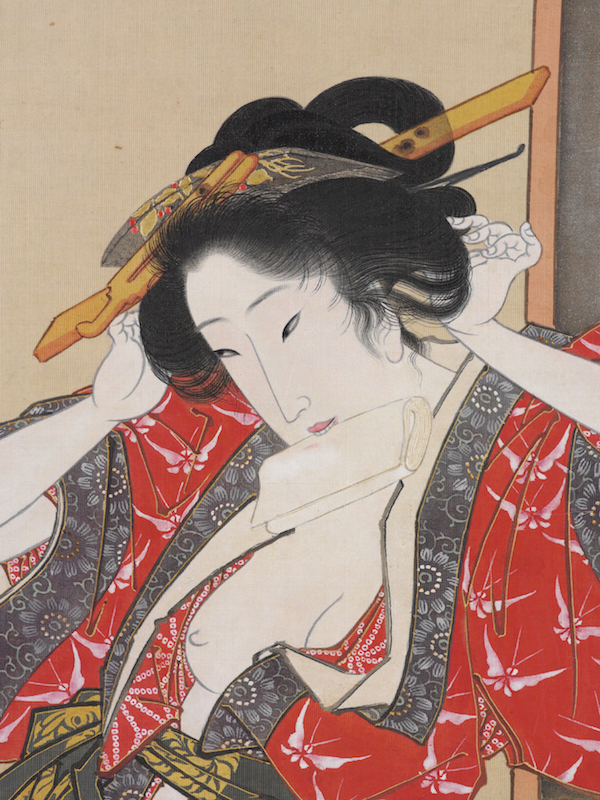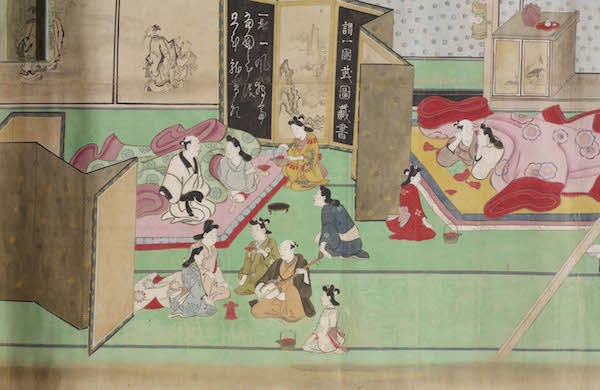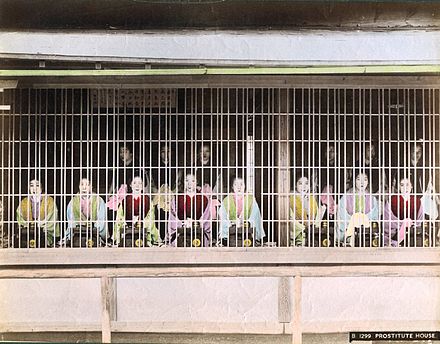Japan has always been a lively cultural hub. In 1600, the Tokugawa family took up the mantle as shogun of Japan and ruled until the Meiji Restoration in 1868. After the transition into the Edo period (also known as the Tokugawa era) in 1600, Japan began a prosperous era of creativity and art. The Tokugawa family implemented a closed-country policy, as they were afraid of outside forces like Russia or the United Kingdom trying to invade and colonize, like they were doing with many of the other small eastern countries. This lack of outside stimuli led to the creation of the original Japanese art and culture we know today.
Like many other countries, there were activities designated to certain districts or neighbourhoods within a city. In the early 1600’s, cities were overrun with prostitution, and as a result were restricted to specific areas of major cities. In the city of Edo, that district what Yoshiwara, also known as the red-light district. The idea of the red light district, or as it was also known, “The Floating World”, was to contain sex work and other culturally condemned activities to a central area.

In Edo, there were large amounts of military due to a policy made under the Tokugawa’s that required daimyo to spend half the year in the capital (this discouraged organization amongst troops to suppress ideas of rebellion). This military foot traffic made the population of the city two men for every one woman, which made brothels extremely popular.

The state of these brothels were awful, as many of the women were enslaved either from childhood or due to debts that they worked to pay off. The population of women who lived in Yoshiwara in the 1700’s was over 3,000, most of them sex workers for military and royal patrons. The only way many of these women left sex work was through marrying wealthy clients, or being promoted to courtesan for a rich patron. On rare occasion, women were able to pay off their debts in 5-10 years.

An unfortunate truth of this red light district were the high levels of early deaths of many young women, either from rampant sexually transmitted diseases like syphilis, or from improperly performed abortions as a result of sex work or being abused by clients.
Outside of that, there were other facets of art and culture that the red light district was known for. Music, painting, theatre, calligraphy were all popular forms of media. The large amount of wealthy daimyo and members of the shogunate made Edo a consumer culture, allowing for the existence of patrons of the arts. Local merchants began accumulating wealth, allowing the public to dictate popular culture for the first time in Japanese history.
References:
https://en.wikipedia.org/wiki/Yoshiwara